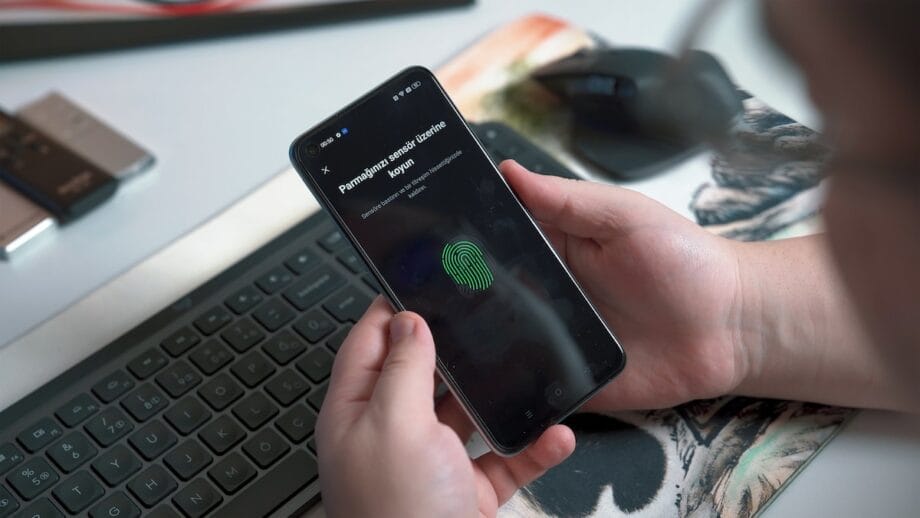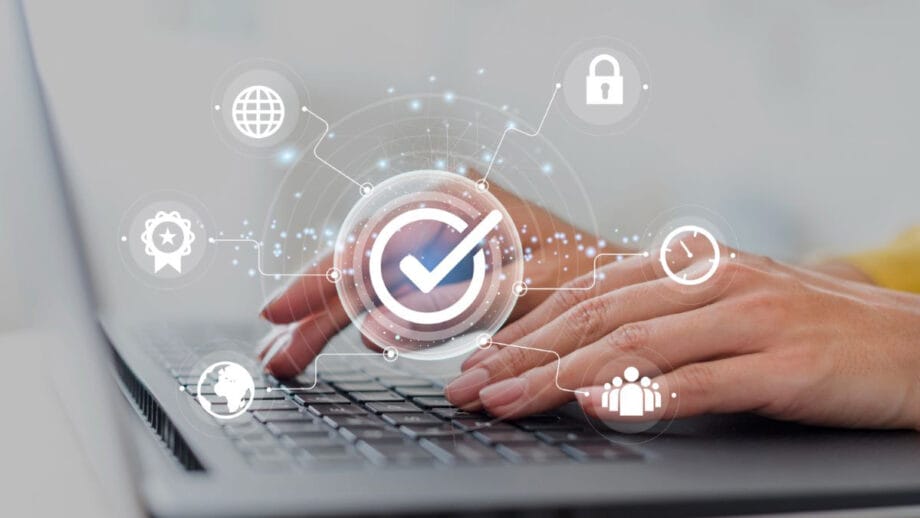In the current age, maintaining data security is increasingly difficult. Traditional methods of verifying data access permissions are insufficient. Cyber attackers develop novel techniques every day, posing a challenge for businesses to maintain security.
The need for enhanced protective measures for our digital platforms is evident.
One striking fact: the average cost of a data breach escalated to $4.88 million in 2024. This emphasizes the magnitude of the issue but also suggests an answer – augmenting cybersecurity tactics with high-tech access solutions.
Our guide discusses passwordless logins, supplemental verification processes like multi-factor authentication, and the adoption of a zero-trust policy. These actions ensure that only authorized individuals can access crucial data.
Eager to enhance your security with advanced access solutions? Continue reading.
Why Traditional Authentication Methods are Falling Short?

Traditional authentication methods can’t keep up with new cyber threats. Eight out of ten financial data breaches happen because of weak passwords or stolen credentials. Hackers find it easy to break into systems that use only passwords.
They have tools and tricks to guess or steal them quickly.
Methods like phishing attacks get smarter, slipping past basic email filters meant to stop them. This means businesses need more than just a password to protect their important info.
Hackers now prefer “login” methods over breaking in. They use flaws in multi-factor authentication (MFA) and hijack sessions. This shift makes old security weak. Endpoint issues cause 60% of breaches, often from wrong patching and setup mistakes. Traditional security cannot keep up with new threats like fileless malware and identity attacks. These sneak past old filters.
The Rise of Passwordless Authentication
Passwordless authentication is currently a leading approach to ensuring business security. It employs elements such as fingerprints and compact devices instead of conventional passwords.
The reason for its popularity stems from the fact that in 2023, an alarming 75% of attacks targeted legitimate credentials to infiltrate systems. The shift from typical passwords makes it challenging for attackers to sneak in because there are no straightforward elements for them to pilfer or estimate.
Passkeys for enterprise is an innovative approach to access that eliminates shared secrets. Instead of storing and transmitting passwords, passkeys use advanced public-key cryptography, which provides strong protection against intercepts, keylogging, and data leaks. As a result, enterprises can reduce the chance of compromised accounts while simultaneously increasing user convenience.
This innovative method serves a dual purpose – it enhances security while making operations more seamless for users. The obligation to recall complicated passwords or change them regularly is no longer a requirement.
Additionally, corporations can reduce costs on IT support as password-related issues decrease. While establishing passwordless alternatives, enterprises consider the compatibility of their systems, the need for employee training, and compliance with all legal regulations.
Instances of these include the utilization of facial identification or security keys that verify your identity, eliminating the need for a password completely.

Multi-factor Authentication as a Critical Layer
Multi-factor authentication (MFA) adds a strong layer to stop cyber threats. It uses three ways to check who you are. These are something you know, have, and are. Cyber experts agree that MFA cuts down on attacks from stolen details.
Microsoft and the Cybersecurity and Infrastructure Security Agency (CISA) say MFA blocks 99.9% of attacks on user accounts.
Adding an MFA system is smart for any business. It protects sensitive data from harmful online risks. Even if a password gets stolen, MFA keeps your information safe by asking for more proof before letting someone in.
This step is key in keeping businesses secure online today.
Embracing Zero Trust Architecture
Zero Trust makes sure no one gets access to company data without proving they should. It uses a “never trust, always verify” rule. Even people inside the company have to prove they are allowed to see information. This method stops bad actors from getting in and protects against cyber-attacks.
This method uses least privilege access, micro-segmentation, and continuous watching over the network. Systems only give the least access needed for a job, split up networks for safety, and watch closely for any signs of trouble. This keeps work-from-home safe and meets rules like GDPR and HIPAA.
Companies start using Zero Trust by looking at their current security measures and making a plan. They need strong ways to prove who users are, like with multi-factor authentication (MFA).
Soon, things like artificial intelligence and blockchain might also become part of Zero Trust. This helps businesses protect sensitive data better against attacks from hackers.

Streamlining Operations with Cloud-Based Access Management
Cloud-based Identity and Access Management (IAM) streamlines managing business operations. It supplies one focal point for control. This reduces errors and elevates security. With IAM, organizations safeguard sensitive data and comply with regulations set by authorities.
Such an approach aids risk management and also cultivates confidence in individuals associated with the business. Transitioning to cloud-based access implies fewer instances of correcting mistakes.
It results in increased focus on business expansion. Cloud IAM provides a transparent perspective of who has access to what within a company, ensuring only authorized individuals reach specific information.
In this manner, businesses operate more smoothly and maintain protection against cyber threats.
Strategic Advantages Beyond Security
Advanced access solutions do more than keep bad actors away. They also make businesses run smoother. With these tools, companies can quickly adjust to changes in their team or technology.
For example, if someone joins or leaves the company, updating their access is fast and easy.
These solutions support growth too. When a business gets bigger, its systems need to handle more data and users without slowing down or breaking. Advanced access solutions scale up easily, making sure everything keeps running smoothly as the company grows. This means less downtime and happier customers.

These tools also help meet rules set by the NIST 2.0 Cybersecurity Framework. They make sure companies can handle cyber threats while keeping their operations legal and safe. With better risk management, companies avoid big fines and keep their reputation solid with customers and partners.
Plus, using tools like machine learning helps spot problems before they blow up into big issues. This proactive approach saves time and money by keeping small problems from turning into big ones that stop work or lead to data breaches.
In short, investing in advanced access solutions brings benefits well beyond security alone. It makes companies more efficient and ready for whatever comes next.
Stay One Step Ahead of Evolving Threats
Cyber threats like ransomware, phishing, and supply chain attacks grow smarter every day. The Microsoft Digital Defense Report showed more ransomware attacks this year. Verizon found ransomware is getting tougher and software bugs are used three times as much in 2023.
To beat these threats, businesses need quick threat detection. Raw Intel offers this advantage.
Companies should use tools like Secure Endpoint and Secure Access from DartPoints to protect themselves. These tools help find dangers fast and keep data safe before damage happens.
Getting ahead of threats is key for any business. The ThreatVision platform, boosted by a partnership with TeamT5, makes this possible. It offers quick alerts on new dangers. This means companies can act fast against cyber risks.
Cloud-based IAM plays a big role in staying safe. It helps track who gets into your systems and stops unwanted access. With tools like this, businesses are ready for anything bad that might come their way.
Using smart tech like AI and machine learning keeps them alert to risks every day. Keeping ahead means always watching for new risks and learning how to stop them with the right technology and plans.
Conclusion

Building strong cyber defense means using new access solutions. Old ways to check who you are don’t work well now. Passwords alone can’t keep us safe.
We use more steps to prove our identity and follow Zero Trust rules, which means never trusting anyone inside or outside the network without checking first. Cloud services make managing who can see what easier and safer.
Using these methods does more than just stop hackers. It makes businesses run smoother and keeps them ready for future threats. With experts’ help, companies can protect their most important data and keep working even after an attack.
To fight off new dangers, businesses need to always be watching and getting better at defending themselves. Investing in these advanced tools is key to staying safe online.
This approach will help your business stay on top no matter what comes its way. Start making your cyber defense stronger today!





